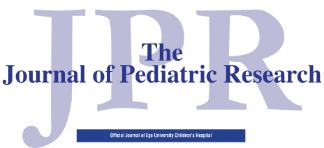ABSTRACT
Juvenile Myelomonocytic Leukemia (JMML) is a rare type of aggressive and chronic leukemia that affects infants and young children. JMML has been included in the category of myelodysplastic and myeloproliferative disorders by the World Health Organization. The average age of patients at diagnosis is 2 years and it is rarely seen in children older than 5-6 years of age. JMML has also been defined as Juvenile Chronic Myelogenous Leukemia (JCML), Juvenile Chronic Granulocytic Leukemia, Chronic and Subacute Myelomonocytic Leukemia. This disease is more common in boys than in girls. JMML is seen by 1-2% between childhood leukemias in the United States, and approximately 25-50 new cases are diagnosed each year. About 80% of JMML patients have genetic abnormality that is identified by laboratory tests in their leukemia cells (7% of patients had neurofibromatosis 1 (NF1), 20-30% of patients had RAS mutations and 35% of patients had PTPN11 mutation). The basic clinical findings of patients were anemia, leucocytosis with monocytosis, thrombocytopenia and massive splenomegaly. Allogeneic haematopoietic stem cell transplantation is the only treatment for JMML, although post-transplant relapse rate is very high. Recently, standard treatment regimens for JMML are quite controversial in the world. Future studies are promising for treatment of these patients.



